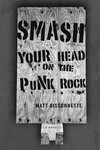
Smash Your Head On The Punk Rock
Matt Bissonnette
Exile Editions
$22.95
paper
205pp
978-1-55096-100-3
The novel’s setting, in what Stephen terms “our sad little city,” is ultimately a celebration of Montreal. The friends witness the Habs riots, invoke Mordecai Richler and Leonard Cohen, and hold strong opinions on language politics. Unfortunately, Bissonnette’s characters are left vaguely defined and attempts at introducing depth with heavy themes like sexual abuse, HIV scares, and economic hardship are handled clumsily. The novel’s language is imprecise, while the dialogue is uninspired and grating. In his quest for gritty realism, Bissonnette often sacrifices artfulness, and as a coming-of-age narrative, his novel largely misses its mark. However, fans of punk rock will still appreciate this homage to the music of a generation. mRb






0 Comments